A Repository of Experiences and Thoughts on lots of Little Nothings
Don't wanna be here? Send us removal request.
Photo

A Few Notes on the Subway:
First, I love the above subway map. This, unfortunately, is not the most up-to-date map but it utilizes an important facet of the current metro system: iconography. The metro/subway was built in the late 1960′s, a time when over 38% of the population over the age of 5 were illiterate. Lance Wyman, who had designed the logo for the Mexico City Olympic Games in 1968 helped design each station’s logos. Most of the symbols directly correlate to a landmark, such as “Pino Suarez” (on the Pink Line). That symbol is an illustration of an archaeological find of an Aztec altar that actually sits inside the station. Naturally, this allowed illiterate people to easily traverse the city.


Women and the Subway
In 2009, a study about women’s safety stated that 9 out of 10 women had experienced some sort of sexual assault and/or harassment on the subway. This horrifying statistic encouraged the government to take a few steps to better ensure women’s safety, such as creating ���Women and Children Only” loading areas, train cars, and buses (see the above blurry photo of the barrier that says “Area Exclusiva Para Mujeres Y Niños”).
In one station, I came across a powerful photo ad campaign that supported breastfeeding in public (second photo). It was a beautiful series that not only educated the public regarding breastfeeding for the physical health and mental well-being of children but also discouraged discrimination of women breastfeeding in public spaces.


An Art Nouveau Surprise
I have something to admit that has weighed on me for some time: I have had a secret, deep-seated, and abiding love for Art Nouveau. There, I said it! The movement’s florid organic shapes and graceful but hyper designed work has held me in its thrall since coming across Alphonse Mucha’s poster art in my childhood. Imagine my surprise when I ran across this genuine Parisian subway entrance near the Palacio de Bellas Artes! It turns out that this entrance was a gift from the French government in 1998 for a mural that was gifted from Mexico to France for their metro. Also, there was a lot of French engineering that went into creating the Mexican Metro overall.
0 notes
Photo


Food of the Gods #5:
Tlayuda de Chicharron. Hailing from Oaxaca, this dish most closely resembles the gringo version of a quesadilla, as it is a flat tortilla, filled with beans, melted Oaxacan cheese and, in this case, chicharrones, cabbage, asiento (lard), avocados, and salsa. But there is one huuuuge difference between the quesadilla we know and a tlayuda: the tortilla. This tortilla is not a standard flour tortilla but is a rather long, flat corn tortilla that is toasted on the grill, giving it a crunch that is unlike any flour tortilla I have tasted—and I’ve tasted a lot of flour tortillas. It was so good and so filling.
0 notes
Photo

Places of Note #4: Teotihuacan
This Mesoamerican site to the northeast of Mexico City dates back to 100 BC, where archaeologists place the beginnings of this vast built landscape. Currently, it is an active archaeological site, with new discoveries every year. An expert I spoke to said that they believe it will be another 2 or 3 generations before the entire site will be uncovered.
But who were the people that populated this place? Well, I had assumed the Aztecs. Looking at the Tenochtitlan site in the center of Mexico City, I saw clear parallels between the two places. And I’m quite positive I was taught that this site was an Aztec site in school. Unfortunately, I was taught wrong. It isn’t clear who the Teotihuacano people were. What is known is that they had some relationship—most likely trading—with the Mayans of the south. This is known only because this last year archaeologists identified Mayan remains on the site.
What is also known is that the name “Teotihuacan” was given by the Aztecs, meaning “Birthplace of the gods” and the Aztecs revered the site, eventually building in a similar style.


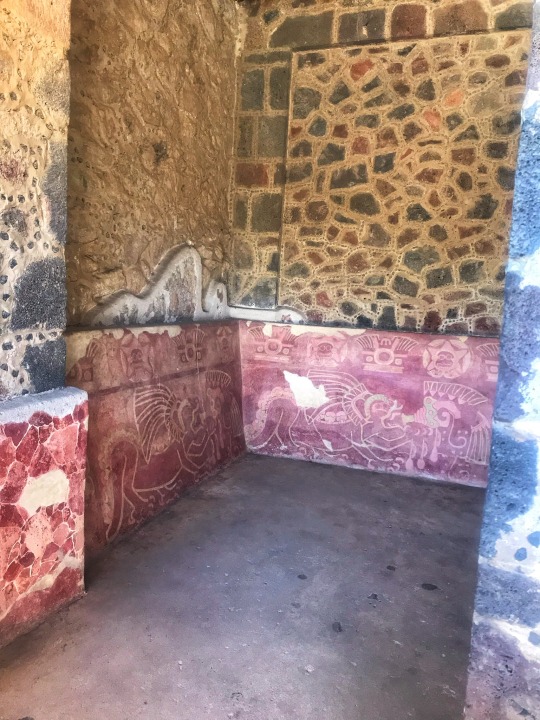
It’s hard to believe, looking at the rough stone structures, but it is said that much of the architecture would have been covered in a type of plaster and painted with colorful murals. We were given access to the inside of a Teotihuacano home settlement. Some of these well-preserved sites still contained plaster with vibrant red and green images. The sites remain well-preserved because a common form of remodeling temples and buildings simply meant building on top and around an existing structure. In a style that will become familiar with the Aztecs (I’ll explore Mexico City’s Templo Mayor in a later post), many of the massive pyramids or structures that we see are the product of buildings being covered by a larger building or pyramid, and so on.
Some of these dwellings were filled in with dirt and rock and simply built on top of, allowing some of the plaster and paint to remain carefully protected. The top relief of green and red birds edges around the entrance to a temple or home, seen in the dark second image. The third image is the interior of a home, with a relief of a ceremonial ritual. We were told that the creature crawling across the red plaster is a priest dressed as a puma in a religious processional.

The above image comes from the Museo de Archeologico and it is a restoration of the outside of one of the temples. Notice the colors and sharp edges to each platform/level. It would have been a stunning sight, these vibrant, sculptural monoliths rising towards the heavens. There is still a lot of mystery surrounding Teotihuacan and its people, but a few things seem clear to archaeologists and anthropologists: the people did not seem to have a centralized government. Families or representatives shared power over the land. This is possibly what led to the weakening of governance.
It is believed that one large contingency of Teotihacanos broke off and moved away, closer to modern Mexico City, building similar temples and homes there. This split along with possible invasions and crop failure led to the society’s decline.



On the site, there are two large temples: the temple of the Moon and the larger Temple of the Sun. A road called the “Avenue of the Dead” runs between the two monoliths, with a series of structures that were either homes or other smaller temples dotting the Avenue.
Tourists are allowed to climb the Temple of the Moon (top two images) but the top of the Temple is unsafe, so they don’t get to its zenith. The Temple of the Sun (bottom image), which is in the top 5 tallest pyramids in the world, is also accessible to tourists and they are allowed to climb to the top of the structure. I climbed that temple.
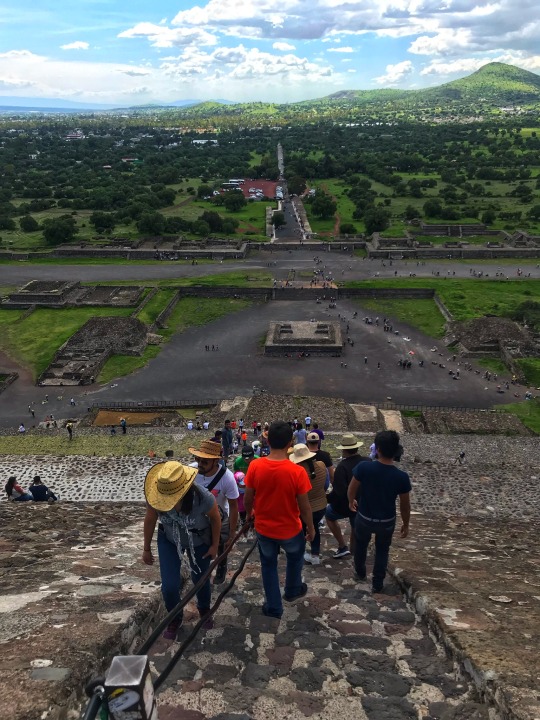
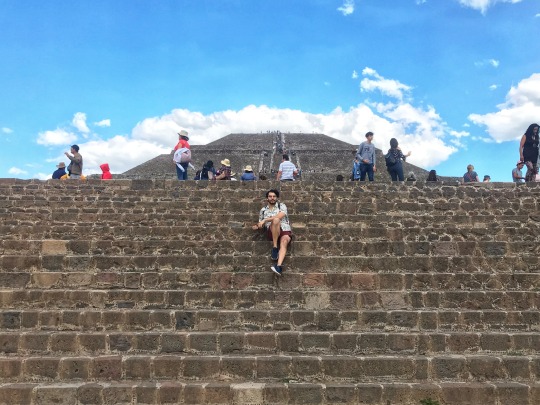
It was a hot day but as I began the climb, the clouds rolled in and a slight breeze blew against my back. Despite the altitude and numerous steps, I made it to the top in one exhausted piece and overlooked the lush landscape and the built environment that is still being unearthed. Imagining the society that endeavored to make this place, alongside their disappearance or dissemination across the country, I felt small. We are only now piecing together the history of these people, and, despite our need to validate our existence, we will someday share in anonymity. It makes me ask, “What great things are we building?” and “How will our greatness be measured?”
0 notes
Photo



Places of Note #3: The Museum of Memory and Tolerance
I spent some time at the Museum of Memory and Tolerance in Mexico City this last week. Much of this huge modern museum focuses on the Holocaust and genocides across the world—I know, not the most uplifting museum day. But it drew me back to that question I’ve struggled with since I was a child: how do countries become primed for hate on such a massive scale? And how did the Christian faithful—Catholics and Protestants—mostly stand idly by or even participate in the massive wholesale murder of Jews, homosexuals, Jehovah's Witnesses, gypsies, and many more?
I was reminded that it’s possibly because their politics and personal theologies aligned with the Nazi Party. The Jews, gypsies, gays, and Witnesses threatened Christian ideology and possibly were seen as deserving of hell nonetheless. So the trains came in and whisked away the “heretics”, the gays, and the gypsies to be slaughtered, while most of German Christianity watched. One of the final exhibits in the museum spoke of the challenges of intolerance and hate at this current moment in time and, tellingly, had a large section on the Language of Hate. Trump and his fomenting of White Supremacy were a prominent example of this.
I say all that to note: I know many kind, lovely Christians who have ardently stood by this President as he has said the worst garbage about women, about black people, and about migrants and “Hispanics” (many of these same supporters are Hispanic!) because their politics align with him and he somehow maybe reflects their worldview. They don’t like their leader being called racist or misogynistic. But I remember the book of Matthew saying, “You will know them by their fruits. Do men gather grapes from thornbushes or figs from thistles? Even so, every good tree bears good fruit, but a bad tree bears bad fruit.” The pall and growth of white supremacy is Trump’s fruit.
As I have watched its growth, it has been supremely clear that it is not the kindness of the faithful that will root out this rot. I have had too many conversations with Christians I used to respect who justify the vitriol, the cages, and the “shoot the migrants” chants. So, it’s like I’m watching Christ’s parable of the Good Samaritan in real-time: many of the unchurched are doing the weeding, standing for justice, and the downtrodden, while the Christians walk on by, turning up their nose to weak, the immigrant, the different. I hear the unchurched speaking the language of mercy. They are being the true “neighbor.” I say all this not to reject some of the believers who I know are doing the immense work of rejecting this hate. There were the solid few who stood up to the hatred of the Third Reich, while there were many more who thought to leave well enough alone. I honor those who fought and continue to fight for justice—believer or non-believer. And I feel so much sadness and anger in my heart for those who eat from the moldering vineyards of Trump’s rhetoric.
I think it is high time to root it out.
0 notes
Photo


Foods of the Gods #4:
Taco de Chile Relleno from El Pascadito. This Sonoran-style taco reflects the abundance of the natural environment of Sonora, which sits on the shore of the Gulf of California. Seafood is a staple of the cuisine and at El Pescadito in the Roma neighborhood that was no exception. One could order marlin tacos, shrimp tacos, or jalapeno tacos. But the best thing? They are all deep-fried.
I had a taco made of a deep-fried breaded jalapeño stuffed with cheese and topped with fried shrimp. I added a chipotle mayo and a squeeze of lime to brighten it a little. These were so delicious that I wanted ten of them, but then I wouldn’t be able to walk, so I’ll admit to a bit of restraint. I only had two.
0 notes
Photo



Inside the Mercados
The mercados that spread across Mexico City used to be the primary source of fruit, vegetables, spices, and meat for locals. As with many cities in the United States, the grocery chains and big-box stores—like Wal-Mart and Costco—are threatening the livelihood of many local vendors. The above pictures come from the Mercado Medellín in the Roma Sur neighborhood. This big Mercado is known for food from all over Latin America and has been called “Little Cuba” because it has so many Cuban flags and vendors.
When entering (top image), you are welcomed by an array of colorful piñatas hanging above your head. One could buy delicious moles (bottom left image) in a wide variety of flavors. I tasted a piñon mole, a rich black chocolate mole, and so many more. The mole is sold in powder or a thick paste form. Add chicken or vegetable stock, and done! There were also various butcher shops and places where one could buy large sheets of chicharron, or pork skin (bottom right). It's a salty snack that people eat like chips or crumbled on top of a dish to add flavor.
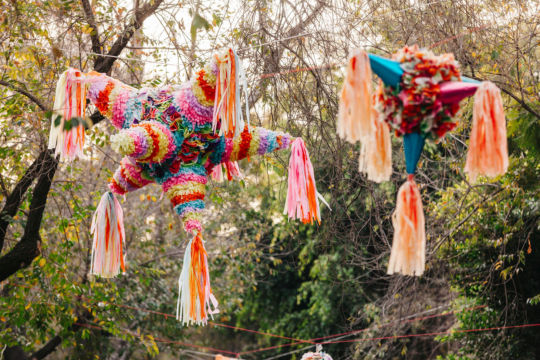
A Note on Piñatas
I grew-up attending birthday parties where piñatas were sometimes a part of the festivities. Usually, they were in the shape of an animal or cartoon character and not the traditional seven-pointed star that I was seeing at some of the mercados. A local took the time to tell me the history of this party game, and unsurprisingly it was complex and spanned multiple traditions.
He said that the game began in, of all places, China! Europeans adopted it and turned it into a religious event to be played around Lent. Thinking that this would be a fun tool for conversion, the Spanish brought it to the Americas but the Mayans were already doing a version of it as a sport—I think Mayans also created an early version of basketball? Nonetheless, the Mayans used to decorate a clay pot, fill it with food or other small gifts, hang it on a string, and break it, saying that the treasures were coming from the gods.
The Spanish Catholic tradition became the version we know best, however. And it had very specific religious meaning. The traditional piñata had 7 points to indicate the 7 deadly sins. The blindfold would represent blind faith, the stick represented love and the will to overcome sin, and the breakage of the piñata spoke of faith conquering sin. The piñata was filled with fruits and nuts as faith’s just reward.
My friend also told me that adults later adapted the tradition for themselves. They fill the piñata with cigarettes, mini bottles of alcohol, and condoms to drunkenly beat the papier-mache receptacle until they too get their own “just reward.”
0 notes
Text
Places of Note #2: Museo de Arte Moderno

Located inside the massive Chapultepec Park, this museum houses 5 or 6 exhibit spaces. The building is shaped like a wheel, with the exhibit spaces in the outer edge of the wheel. The day I arrived it was raining hard and I was unable to get a good picture of the outside. Sorry. The above picture is of the ceiling in the central circle, which glows like a sun in hues of copper, yellow, and black.
Below, I will highlight a few of the exhibits and a sampling of their art.
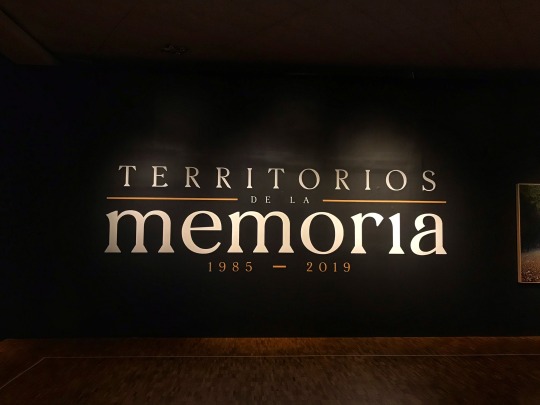
The exhibition Territorios de la Memoria covers art in the United Mexican States from 1985-2019 that is “marked by transitions in the social, cultural and political spheres.” The territorios covered were: changes in the family unit, concepts of gender, nationhood, the physical environment, movement towards urban communities, egalitarian ideals, and the road ahead. It seems like a lot of ground to cover, and the exhibit did an excellent job doing so.
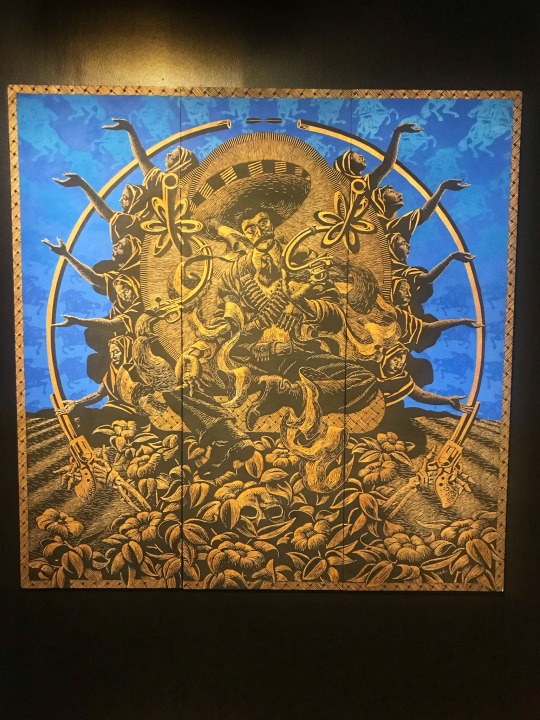
"El Buda Zapata” (2004) by Patrick Petterson. The Memoria of Emiliano Zapata is complex and Petterson reflects this in his triptych painting. Here, Zapata reminds me of Bodhisattva Avalokitesvara, with many arms reaching outward. Avalokitesvara represents the desire to free others from pain and provide compassion, which is juxtaposed with Zapata, dressed in his ammunition bandolier, sombrero, sitting peacefully atop flowers, and, ultimately, death. Zapata’s battles for the agrarian peasant communities made him a hero for many and eventually inspired changes in the country’s constitution to assist farmers. But his message of “compassion” was shown through war, expressed as the weapons that turn into floral trumpets and the halo of a pistol barrel that envelopes him.
To note: On the metro ride to the museum, a small display was set up in the station discussing the humble beginnings, the rise to power, and the eventual assassination of Emiliano Zapata. A grotesque element of his death was the variety of pictures that members of the rival army took with Zapata’s corpse—many of which were broadly displayed in the metro station for all to see.
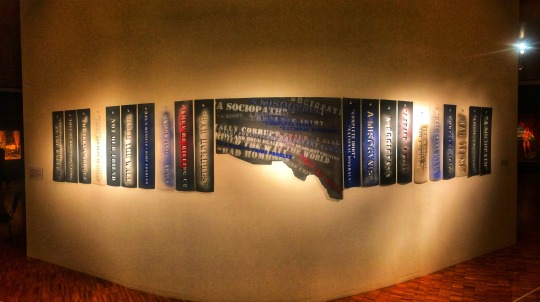
“Border Line” (2019) by Carlos Aguirre. (Apologies for the blurry image) Reflecting on the new “post-national” identity of “migrant”, Aguirre places a variety of statements side-by-side, cut out of large stencils. The statements are some spoken by Trump about Mexico and her people (from left to center): “Bad hombres”; “They’re killing us”; “Has a massive crime problem”; “Totally corrupt.” These stencils are juxtaposed with rhetoric about Trump (to the right of the center section): “Complete idiot”; “A misogynist”; “A sociopath”; and so on. Caught in the center is the politics of the border, displayed in the jagged edges of the border states of Arizona, New Mexico, and Texas, which welcomes and rejects the migrant in a muddle of political rhetoric. The panels that flank the border states recall the current metal wall that sits along the border.
In my own observations, yes, the rhetoric is frustrating and, frankly, a mess. What has come up a few times in conversations with locals is a joking response to being called “rapists” and “murderers” by the sitting President of the United States—something, strangely, they bring up on their own (I would never outright ask someone their feelings on such vitriol). They say this because they have friends and family who work dutifully in the United States, and some of them have studied or worked themselves in the States. In their joking, there is a tinge of darkness, which I understand a little. To have the leader of a superpower dismiss and degrade a nation—much less a neighbor—with such terms, and to seemingly have a large population of the country still support him, requires a little nervous laughter to get by because all that would be left would be fiery, righteous anger.
Thankfully that’s also why we have art!
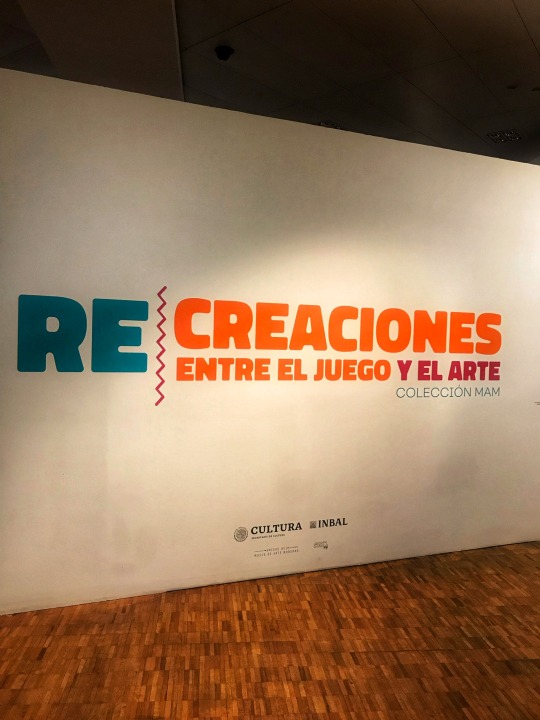
Re-Creaciones: Entre el Juego y el Arte (Recreations: Between Play and Art) is a fun exhibit that looks at games, toys, puppet shows, and other elements that represent childhood and play, put side-by-side with art that is inspired by them. The exhibit was whimsical and had a lot of great hands-on projects, as well as plenty of art that was not to be touched. It was bound to bring out the child in anyone!
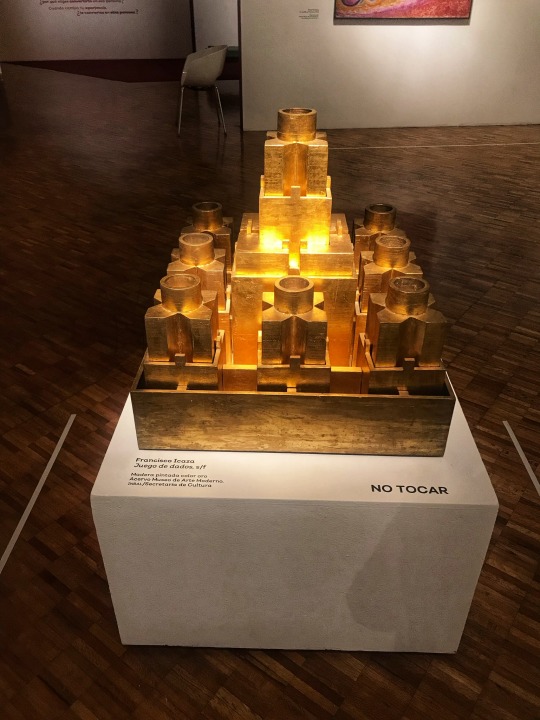
“Juego de dados” (No date) by Francisco Icaza. Also in the midst of his own large exhibit at the Museo del Palacio de Bellas Artes (I posted about his fun Brecht-inspired piece), Icaza recreates blocks, “dice”, or even Lego pieces into what looks like a temple of gold. It reminds me of some of the renderings of Aztec temples, which would have dotted the island of Tenochtitlan.
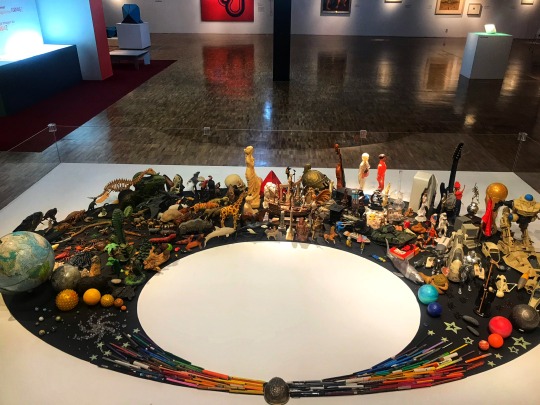
“La historia del Universo” (2011) by Ulises Figueroa. I love this simple and beautiful realizing of, not only the history, but the idealized future of the universe. Figueroa expresses the Big Bang up until...the robots take over and the world ends? Hard to say, but I could spend quite a while dissecting all of the fun jueguetes that make up this piece.
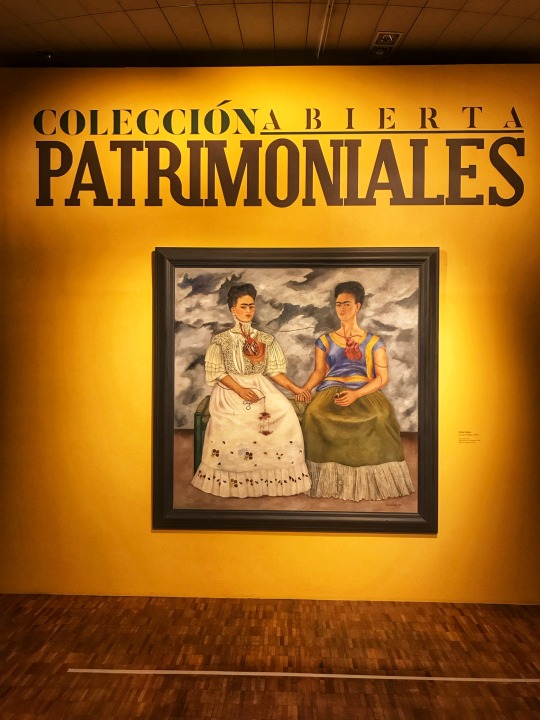
Colección Abierta Patrimoniales (Open Heritage Collection) exhibits some of the “Heritage” artists of the United Mexican States who made art between 1913-1974. Think: Frida Kahlo, Diego Rivera, José Clemente Orozco, María Izquierdo, and more. The painting that welcomes patrons is probably one of Frida Kahlo’s most famous works, "The Two Fridas” (1939). Painted after her divorce from the womanizing Diego Rivera, Frida is expressed as two halves; in a Tehuana dress on the left and as a modern woman on the right. The traditional woman’s heart is split. Both Fridas seem to give each other comfort, as the sky storms behind them.
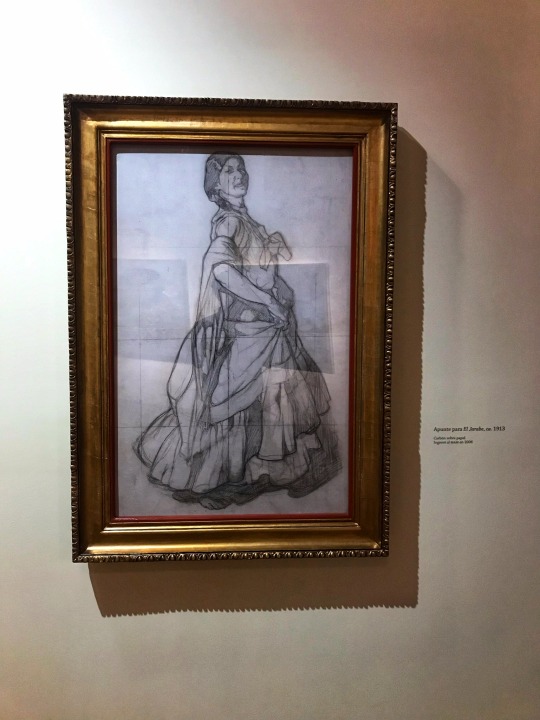
”Apunte para El Jarabe” (1913) by Saturnino Herrán. This is a charcoal study for Herrán’s later full painting “El Jarabe”, which features a woman preparing for the “Mexican hat dance” El Jarabe. The later painting would also feature a man bowing to her, in preparation for the bailar. I was drawn to Herrán’s work because it reminded me of the work of Norman Rockwell in the United States. At the time of this study, Rockwell was 18 years of age and just beginning his career as a painter and illustrator. The crossover for me is not just their naturalistic, idealized, almost commercial style of painting, but also their ability to tell expressive, romantic narratives about “the Nation”.

(From left) “Historia de la religión I (Azteca)” (1950) by Diego Rivera
(Center) “Historia de la religión II” (No date) by Diego Rivera
(Right) “ Historia de la religión IV” (1950-57) by Diego Rivera
Arguably Mexico City’s most famous muralist, this triptych is easily in conversation with many of his works etched on the walls of the Palacio de Bellas Artes or the Secretaría de Educación Pública building, which tend to glance backward at an idealized past. Here it would seem that Aztecs are bloody and can write, Greeks can build and do the math, and Romans bring about Jesus. Despite this, I am fascinated by how much more interesting and dynamic the Aztec panel is compared to the other two. In fact, the Roman/Jesus panel is downright dark and kind of boring.
I’m sure there will be more on Diego Rivera, as one can’t throw a rock at a wall without hitting one of his works here. He certainly had a lot to say.
Check out the Museo de Arte Moderno here.
0 notes
Audio

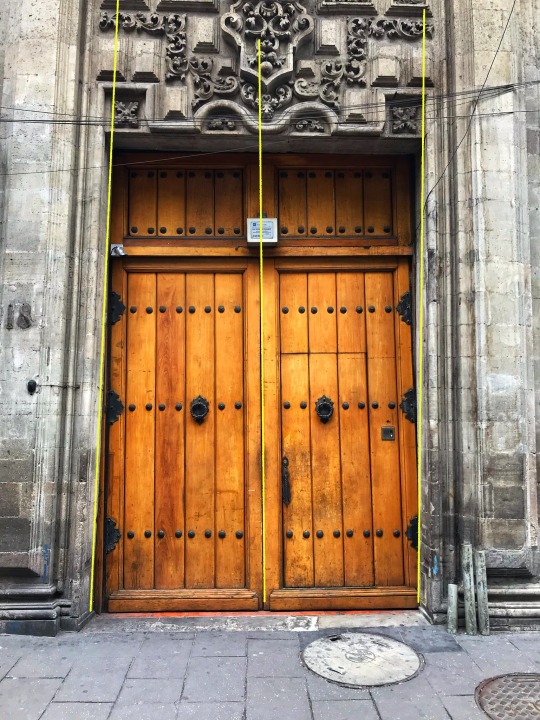

Referenced:
99% Invisible’s Episode 355: Depave Paradise
0 notes
Photo

Foods of the Gods #3:
Aguachile con Camaron and Sopa de Camaron from La Veracruzana in the Roma Norte neighborhood. Aguachile con Camaron is shrimp marinated in lime juice, serrano peppers, and cilantro, topped with raw onions and avocados. It was a sharp and spicy dish, similar to ceviche. The Sopa de Camaron is a tomato-based broth with some carrots, potatoes, and a little bit of shrimp. Both pair well with una cerveza!
0 notes
Photo







Places of Note: Palacio de Bellas Artes
This gorgeous museum is an amalgam of Art Nouveau, Art Deco, and Neoclassical styles—mostly due to its start and stop construction between 1904 and 1934. It was one of the many expensive and expansive projects undertaken by President Porfirio Díaz during his 30-year reign. (He is a man who will come up later regarding Mexico City’s architecture.)
The Palacio contains a few rotating exhibits, a performance space for regular dance and music theater, and some of Mexico City’s most gorgeous murals. A sampling is above:
Top Center: "Man, Controller of the Universe" (1934) by Diego Rivera. One of the Palacio’s most famous murals, it was originally commissioned by John D. Rockefeller for Rockefeller Center in New York City, but its obvious praise of communism angered Rockefeller and he had the mural destroyed. Rivera repainted it for the Palacio and renamed the piece from “Man at the Crossroads” (Meaning between Capitalism and Communism), to “Man, Controller of the Universe.”
Middle Left: “Nueva democracia” (1944) by David Alfaro Siqueiros. One part of Siqueiros’ three pieces regarding new democracy. I find this one particularly powerful in its almost commercial depiction of the pain of new democracies. The bare-breasted woman is exploding from the earth, carrying a torch of liberty in her right hand and a flower of peace in her left. Beneath her left hand is a dead fascist—probably Nazi—soldier, with blood on his hands. There is hope in this image but she remains shackled, for democracy can be another form of oppression.
Middle Right: “La farandula, homenaje a Bertold Brecht” (1959) by Francisco Icaza. Part of the current exhibit of Icaza’s work, I found this homage to the theatrical work of Brecht to be both playful and funny, composed like the last supper but with as much or more theatricality.
Bottom Center: “Liberación o La humanidad se libera de la miseria” (1963) by Jorge Gonz��les Camarena. I love both the composition and colors of this piece, which is hard to regard effectively in my lame photography. Camarena, like Rivera and Siquerios before him, is responding to a human struggle and the slog towards progress, but he believes that freedom from slavery comes from education and art, which is a form of spiritual freedom. This shows the evolution of freedom. To the far left (and cut out of my picture) is a man in a coffin flanked by a woman covered in tattoos, which represent prejudice and defeat. The middle section is the struggle against the chains and bonds of injustice. The right section is a mestizo woman holding a kernel of maize, representing wisdom, life, and freedom.
Finally, of note was the museum’s wonderful focus on accessibility. Spread throughout the museum floor were college students with buttons saying “Ask me a question” in English or in Spanish. They were there to help contextualize any and all of the work as impromptu tour guides, should the need arise. Additionally, if an exhibit had a voice narrating in the space, the museum displayed screens of people signing the words being spoken. It was smart and a big step forward from many other museums I have visited.
1 note
·
View note
Photo

Foods of the Gods #2:
Infladita de maiz criollo - a puffed corn tortilla stuffed with a corn puree, topped with criollo cheese and chapulines (fried grasshoppers). The corn puree was delicious but not heavy on seasoning, which is where the cheese helped up the salty and brininess of the dish. The grasshoppers, which are usually fried in some seasoning, added a crunchy texture, but I was not sure if it was adding any flavor to the dish. I also didn’t love picking small grasshopper legs out of my teeth.
(From Domingo Santo in CDMX)
A Note on Eating Bugs:
Chapulines, scorpions, and other dried or fried bugs are eaten in parts of Mexico City and the United Mexican States, such as Puebla and Oaxaca. They can be eaten as a snack or in dishes, such as the infladita above. The eating of grasshoppers is an old custom, dating back to the 16th century. They are a great source of protein during the rainy summer season; one ounce of chapulines is about 4-8 grams of protein. For comparison, a 1 oz chicken breast is about 8 grams of protein, but that has to be raised for food, which can take years—chapulines are harvested in the wild.
Unsurprisingly, the eating of bugs is something of a cultural taboo in much of the United States. For example, an important plot point of the apocalyptic 2013 movie and graphic novel Snowpiercer was that the poor didn’t realize that the protein bars served by the government were actually made up of ground locusts.
youtube
It is a scene played for horror, but in fact, it is a type of ethnocentrism—the belief that one’s culture is better than another’s, or that others are “primitive.” For some cultures, the eating of bugs is not horrific or sad, it is a delicacy that ties them to their own history and identity. And it's tasty!
What is “tasteful”, however, is shaped by culture and exposure. Somehow, in the US, people decided that cracking open lobsters and dipping them in hot butter was a delicacy. I think that looks equally terrifying, but that too is all about exposure, I guess.
For an interesting article about chapulines and culture, read Corinna Sargood’s article in The Art of Eating, called “Chapuline, a Mexican Delicacy.”
0 notes
Photo


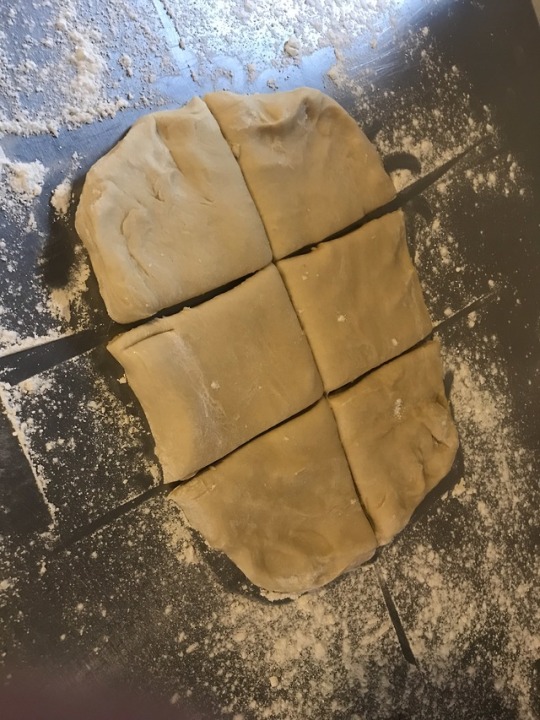



Making Conchas:
Last week, I took a lovely baking class with a small family of three from LA, led by Eliceo, our patient teacher in his home. He took us through the process of making conchas—a Mexican sweet bread with a crunchy, sugary topping. Back in New Mexico I had tried conchas and didn’t particularly like them. Unlike French or Italian pastries, most Mexican pastries seemed to be very dense and heavy, and the conchas I tried were like eating mealy bricks.
This was fortunately not the case with these conchas. The dough felt similar to the lightness of a brioche, without as much butter. Apparently, most traditional conchas have half butter/half lard. Eliceo was conscientious about some Americans’ sensibilities regarding lard—not mine, mind you—and opted for all butter. The crunch top is almost a cookie dough, rolled real thin and laid atop the conchas.
I’m proud to say that they were light, delicious, and addictive. And, pleasantly, upended my expectations.
For a great article on the history of conchas from Eatery, click here.
0 notes
Photo

Foods of the Gods #1:
Panuchos con Cochinita- From the Yucatán. Slooooow cooked pork, marinated in orange and other citruses, with red or black achiote (or annatto) seeds. Served on panuchos, which are two corn tortillas, lightly fried, with beans stuffed in-between. The salsas are all habanero based, so it goes from hot to seared tastebuds, but all are delicious.
I found the orange/red cochinita to be the best tasting.
0 notes
Photo





Panadería Ideal
A bakery shop like none other. Panadería Ideal has a few locations, all filled to the brim with pastries, cakes, and sweets as far as the eye can see. People load their pans, pasteles, y dulces onto massive trays to purchase. In the late afternoon, it is not uncommon to see customers walking the streets with large boxes of pastries for their family's morning coffee or to sell in their own cafes/restaurants.
Despite the long line, I purchased a few meringue cookies.
They were well worth the wait.
0 notes
Audio
A short audio essay on Mexico’s organ grinders.

2 notes
·
View notes
Photo


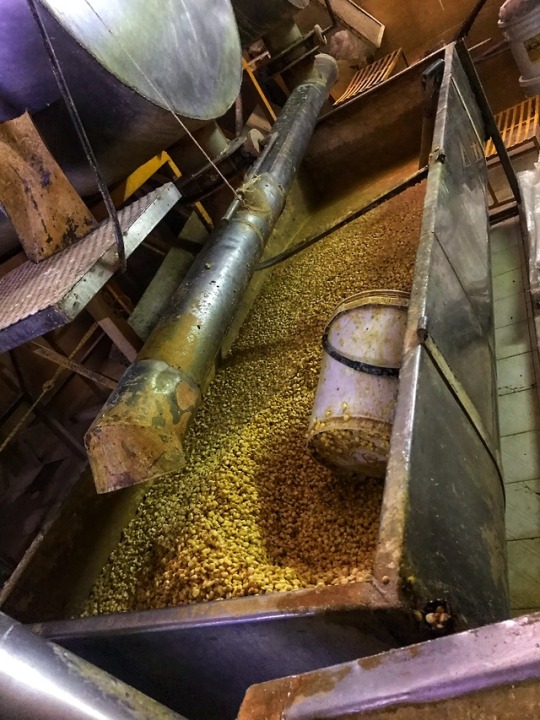

The Humble Tortilla
La gente at work at Tortilleria Cordoba in the Roma Norte neighborhood. These tortillas are so delicious that people munch on them unadorned as a treat. But this humble corn product is more than just a treat. For many Mexicans, the tortilla is a quintessential staple, which makes the politics of the tortilla complex. NAFTA, agricultural price controls, and governmental infighting have made the price of tortillas unstable, raising the ire of the public. Every few years, protests erupt from price hikes or even potential price hikes of tortillas, and the government takes notice. History has shown that political revolutions can take place when access to bread, tea, or other necessities is threatened. Tortillas here are no exception.
(Click on pictures for extra info)
0 notes
